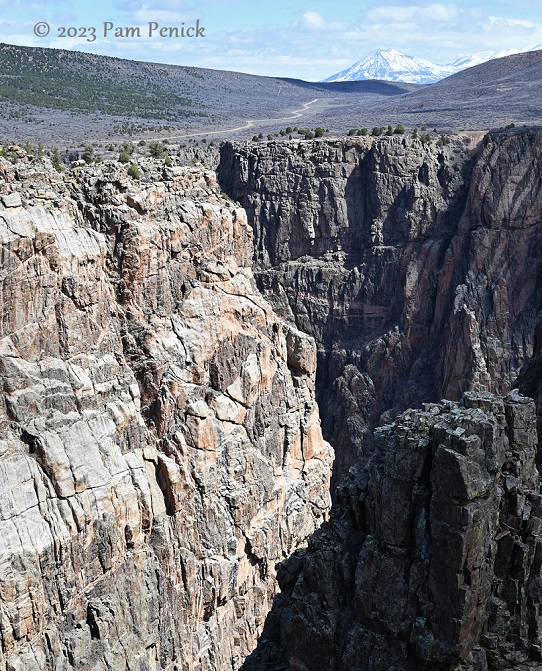
After kicking off our national parks tour at Great Sand Dunes in southern Colorado, we headed west to another park we’d never visited: Black Canyon of the Gunnison National Park. The thrillingly steep canyon walls, black and forbidding, so sheer the sun rarely touches both sides at once, plunge to the snaking green Gunnison River below.
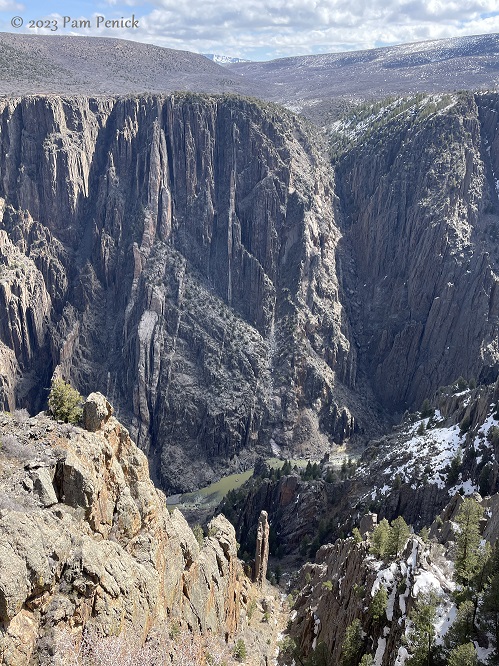
The park service explains how the dramatic canyon formed:
The story of Black Canyon can be summed up in three words: grow, blow, and flow. About 60 million years ago, a small area of land uplifted (grow), bringing 1.8 billion year old metamorphic rock to high elevations. This is called the Gunnison Uplift. About 30 million years ago, large volcanoes erupted on either side of this uplift, burying it in volcanic rock (blow). Then, as early as 2 million years ago, the Gunnison River began flowing in force (flow). The river and time eroded all of the volcanic rock and cut a deep canyon in the metamorphic rock below. What you see today is a deep, steep, and narrow canyon: the Black Canyon of the Gunnison.
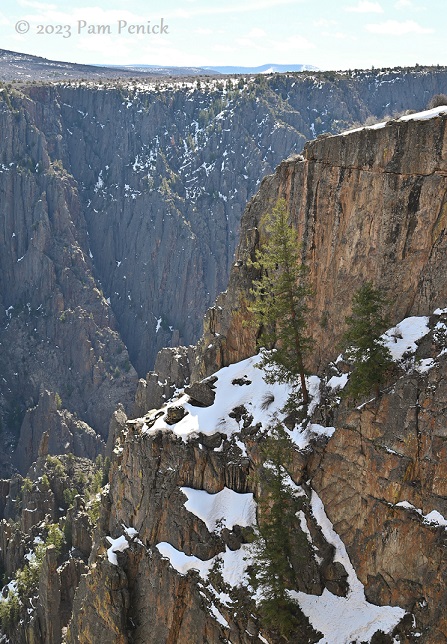
We spent a day driving along the south rim, stopping at overlooks and peering into the abyss. It was mid-April, and patches of snow still blanketed shaded canyon ledges.
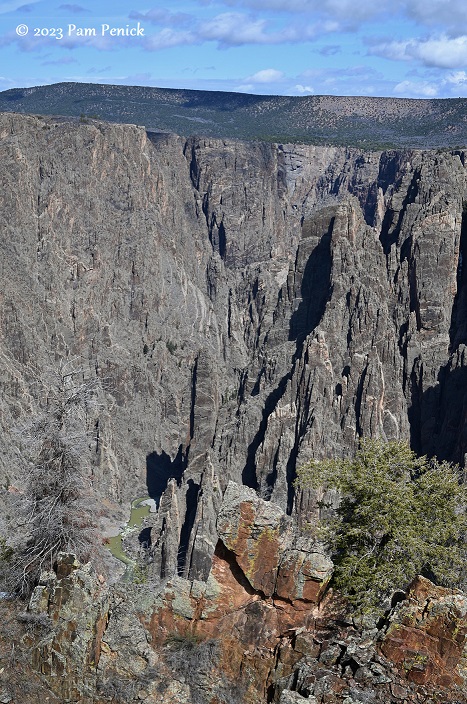
At its deepest point, the gulf from rim to river is 2,722 feet.
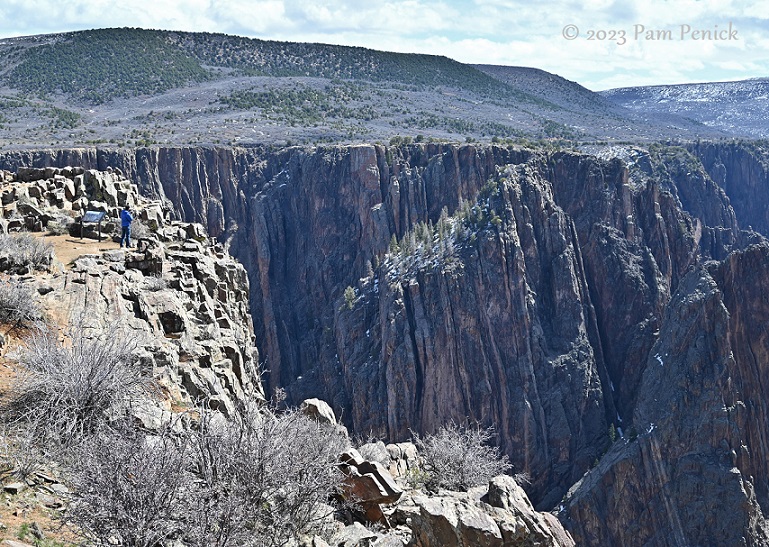
South Rim Drive had just opened when we were there in mid-April, after a snowy winter. East Portal Road into the canyon was still closed and didn’t open for a month after our visit.
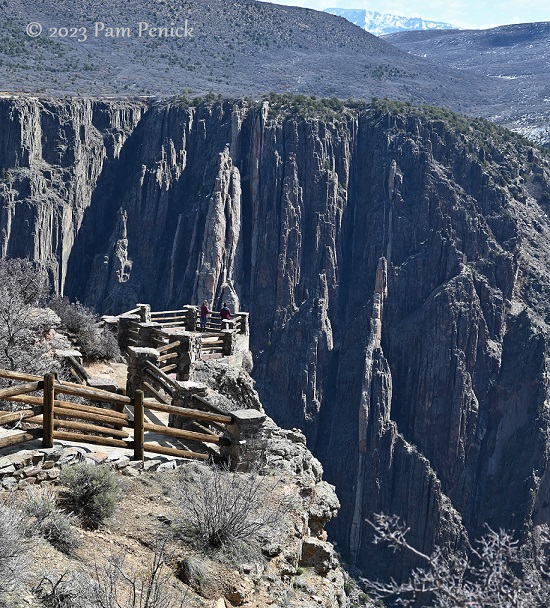
You can hike into the canyon, but here’s some key info:
There are no maintained or marked trails into the inner canyon. Instead, there are “wilderness routes,” or unmarked scrambles to the river. Only individuals in excellent physical condition should attempt these routes; they are not meant for small children. Wilderness Use Permits are required. Hikers are expected to find their own way and be prepared for self-rescue…Poison ivy is nearly impossible to avoid, and can be found growing 5 feet tall along the river.
Yeah, nope.
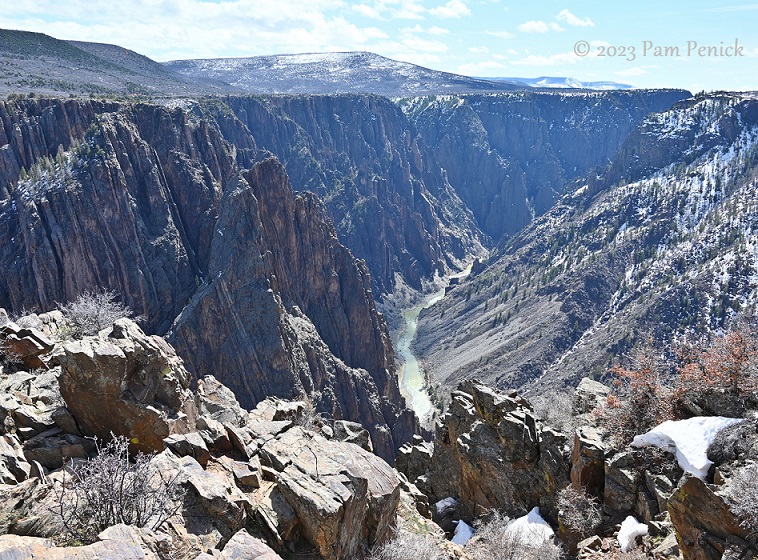
What a beautiful, rugged place — and an excellent welcome to canyon country as we headed the next day into Arizona and then on to Utah.
For a look back at our visit to Great Sand Dunes National Park, click here. Up next: A luminous, sand-swirling stroll through gorgeous Antelope Canyon in northern Arizona.
I welcome your comments. Please scroll to the end of this post to leave one. If you’re reading in an email, click here to visit Digging and find the comment box at the end of each post. And hey, did someone forward this email to you, and you want to subscribe? Click here to get Digging delivered directly to your inbox!
__________________________
Digging Deeper
Come learn about garden design from the experts at Garden Spark! I organize in-person talks by inspiring designers, landscape architects, and authors a few times a year in Austin. These are limited-attendance events that sell out quickly, so join the Garden Spark email list to be notified in advance. Simply click this link and ask to be added. Season 7 starts in August. Stay tuned for the lineup!
All material © 2023 by Pam Penick for Digging. Unauthorized reproduction prohibited.
The post Cliffs of insanity: Black Canyon of the Gunnison National Park appeared first on Digging.




